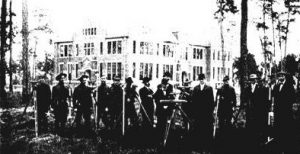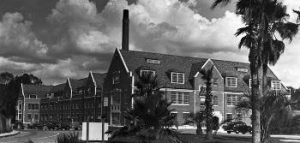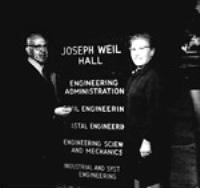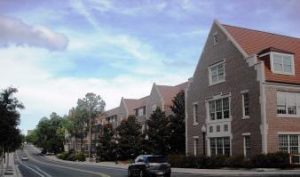Our Civil and Coastal Engineering Department is rich in history.

During the early 1900s, several educational institutions were consolidated and moved to Gainesville, Florida, establishing what is now the University of Florida. After the second University President, Dr. Murphree, took office in 1909, he proposed establishing several colleges and by 1910, eight colleges with divisions were formed. The College of Engineering was established, although there was no engineering building. Civil Engineering was one of only three engineering programs available at the university at this time. By 1911, the engineering building was completed (later named Benton Hall after its first Dean, Dr. John Benton).
World War I slowed the growth of the University, but by 1928, the Civil Engineering program began to offer Master’s degrees. During the Great Depression years, enrollment and funding declined to almost a standstill. The College of Engineering and the programs within it held steadfast and progressed academically, despite the difficulty of recruiting students and retaining faculty.

The 1940s were bleak as the College experienced dramatic change due to World War II. Enrollment had been as high as 200 students in 1937, but dropped to 40 by 1944. This, however, did not stop research from being completed. In 1944, the state finally appropriated funds for the operation of the Florida Engineering Experiment Station. This Station and associated research greatly impacted much of the current programming conducted within the Department of Civil and Coastal Engineering today. Planned research included projects in hurricane tracking, the effect of wind on structures, water supply and wastewater concerns, beach conditions and aerial mapping.
With the surge of research came growth for the College of Engineering and it outgrew the old building. A new facility was proposed and completed in 1951, known today as Weil Hall. By 1957, new studies in Coastal and Oceanographic Engineering were added to the curriculum. Also, women were now enrolling in the College’s programs.

The 1960s brought change to the Civil Engineering program. Sanitary Engineering, a program housed in Civil Engineering, first became Bio-Environmental Engineering and then evolving into its own department, Environmental Engineering. The 1970s saw the establishment of the Coastal and Oceanographic Engineering Laboratory, which was seen as an interdisciplinary and independent unit of the College.
In the 1980s and 1990s, the Transportation Research Center (TRC) added several service groups. The first was the Center for Microcomputers in Transportation (McTrans) which provides transportation software and support to a global market. The Florida Technology Transfer (T2) Center was established in 1984 to conduct state, national and international technology transfer and training activities. The T2 Center has hosted a number of international conferences, one with 58 nations attending. Later, the Construction Training Qualification Program (CTQP), now know as the Center for Transportation Training (CTT), was established under the TRC umbrella to develop and provide federally mandated training to road builders.. McTrans, the Florida T2 Center and CTT continue to serve the Department, graduates and transportation professionals worldwide.
In 1986, Professor Duane Ellifritt conceived the idea that by building structure (orange in color, of course!), it would help his students in steel design understand many engineering concepts. His idea, known as “The Thing”, was constructed and proudly stands on the west lawn of Weil Hall. The idea became so popular that other schools built similar structures and by the end of the century, 80 appeared around the country.
Finishing out the century, our Department underwent other changes. The Surveying and Mapping program was renamed “Geomatics” to reflect the current trends in surveying technology. In the summer of 1999, the Civil Engineering Department merged with the Coastal and Oceanographic Engineering Department to become the Department of Civil and Coastal Engineering.

In the early 2000s, the Department temporarily moved to Yon Hall to allow for renovations to the west wing of Weil Hall. The Department moved back in 2003 when work was completed and remains housed there today. It was also during 2003 when the Florida Research and Engineering Education Facility or REEF program became the UF Electronic Delivery of Graduate Engineering or EDGE program, offering distance learning degrees. Civil Engineering is one of the options. The Geomatics program was moved to the School of Natural Resources and Conservation in 2004. Also, there are additional centers in place such as the National Center for Airborne Laser Mapping (NCALM, Airborne Laser Swath Mapping (ALSM), Water Resources Research Center (WRRC), and the Center for Infrastructure Protection and Physical Security (CIPPS). The Bridge Software Institute (BSI) which is a research center is also part of the Department of Civil and Coastal Engineering.
Today, the Civil and Coastal Engineering Department has over 700 undergraduates and 320 graduate students from all over the world. Research funds are in excess of $13,900,000. From our meager beginnings, we have grown to be a contender among the top engineering programs in the country and are proud of our existence in the Gator Nation!